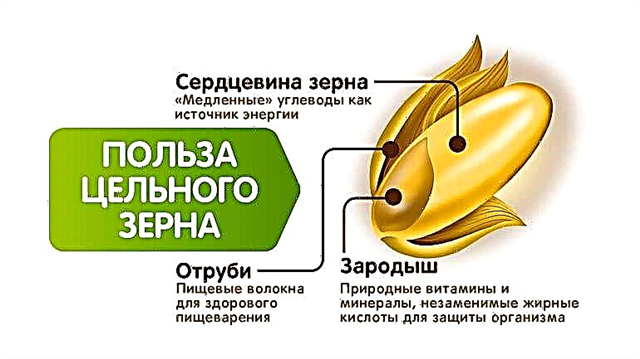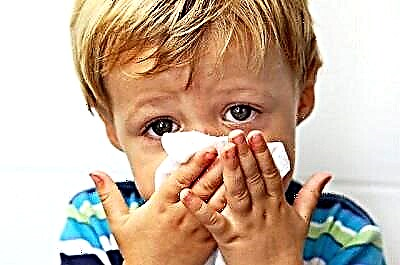The yellow whites of the eyes in newborns is a fairly common symptom. Most often, it means that the crumbs have increased bilirubin levels, and jaundice has begun. Parents should not be afraid of this condition, as it can occur even in perfectly healthy and full-term babies. It usually goes away in 5-7 days and does not require treatment. There are times when it is necessary to take urgent measures to normalize all indicators in the body.

The baby has jaundice of newborns
The mechanism of development of jaundice
The condition where a newborn baby has yellowish whites of the eyes is called neonatal jaundice (physical jaundice), which occurs due to high levels of bilirubin. In 55-60% of babies in the first week of life, the skin and visible mucous membranes acquire a yellowish tint. In premature babies, the incidence of jaundice rises to 80-85%.
Note! This type of jaundice is a natural process, pediatrician Yevgeny Komarovsky advises all mothers to calm down and not worry about whether neonatal jaundice needs to be treated.
This condition of the baby is not a disease, it is associated with the postpartum period of adaptation, when the body of the newborn adapts to new environmental conditions. During this period, fetal hemoglobin (HbF) changes to hemoglobin A (HbA). Due to the incomplete maturity of the enzyme system, the level of bilirubin in the blood increases. It affects the color of the skin and eyes. Yellowness is most pronounced on the 3-4th day of a child's life and most often disappears on the 7-8th day after childbirth. When the enzyme system of the body begins to function at full capacity, the skin color takes on a natural shade for newborns.
Important! The normal level of bilirubin on the first day of a child's life should be no more than 85 μmol / L. Two weeks after childbirth, the norm is up to 20.5 μmol / l.

Yellow child
Why does the baby turn yellow
Fetal erythrocytes are filled through the fetal hemoglobin. After childbirth, when the baby's contact with the placenta stops, the newborn's red blood cells are destroyed due to the immaturity of hemoglobin. As a consequence, a new substance appears - bilirubin. It contributes to the fact that the baby gradually begins to change, the skin and eyes turn yellow.
Yellow eyes in a newborn can be due to:
- Incompatibility of the blood groups of the baby and the mother;
- Congenital infectious diseases;
- Oxygen starvation or asphyxiation during childbirth;
- Hormonal imbalance;
- An underdeveloped liver or biliary tract;
- Features of bilirubin and hemoglobin metabolism;
- Failures in the enzymatic system;
- Not enough protein in the body.
Note! In adults, the liver is involved in removing bilirubin from the body, but in newborn babies, this organ cannot yet function at full capacity, which is why bilirubin accumulates in the blood.

Jaundice in a premature baby
Possible diseases
Yellow eyes in a newborn is a symptom that can occur with the development of serious pathologies in the body, namely:
- Hepatitis;
- Tsive's syndrome;
- Cirrhosis of the liver;
- Erythrocyte hemoglobinopathy;
- Budd-Chiari Syndrome;
- Cancer neoplasms of the liver;
- Echinococcosis of the liver;
- Erythrocyte enzymopathy;
- Amoebiasis;
- Malaria;
- Erythrocyte membranopathy;
- Autoimmune anemia;
- Babesiosis;
- Opisthorchiasis.

Baby with jaundice
Identifying symptoms
Most newborns have neonatal jaundice, a symptom of which is not only yellowed skin, but also the eyes. It is not dangerous for the child's health and disappears in a few days. In some cases, the yellow whites of the eyes in a newborn are a sign of pathological diseases.
Symptoms that indicate something is wrong with the baby:
- The baby was born with yellowish skin, or she acquired such a shade in the first day after birth;
- Symptoms intensify for 3-4 days of life;
- The yellowness of the skin does not go away, even when the baby is 1 month old;
- Symptoms of the disease periodically appear and disappear;
- The child may have white stools and dark urine;
- The baby completely or partially refuses to eat;
- The baby has more frequent regurgitation, or vomiting;
- Weird bruises and bruises appeared on the baby's body;
- On palpation of the abdominal cavity, an enlargement of the liver or spleen can be seen;
- A yellow rash appeared on the child's face and body;
- The newborn looks lethargic and sleepy;
- The baby has an increase in temperature.

The child has yellow pimples on his face
Diagnostic techniques
If non-standard clinical manifestations were found in the hospital or already at home after discharge, the child will need to undergo a full examination. It provides:
- General examination by a pediatrician;
- Blood, urine and feces tests;
- Careful study of the history of pregnancy and childbirth.
After the research, the doctor makes a general conclusion. If he has suspicions of the development of hemolytic disease, which cannot be confirmed or refuted by any analysis, he will prescribe certain blood tests, according to the results of which it will be possible to track the dynamics of specific indicators.
Additional Information. If a newborn has yellow eyes at 1 month, then he will be referred for a consultation with an endocrinologist or surgeon. With a complex course of pathological jaundice, a hospital stay and drug therapy may be required.

Jaundice treatment under a UV lamp
Types of pathology
Yellow pupils in a newborn can be due to the effects of infectious diseases, the development of intrauterine infections, metabolic or endocrine pathology. One of the main reasons for yellowing of the skin and mucous membranes is the absence or acquired infection of the biliary tract. With such a pathology, bilirubin is not excreted from the child's body at all.
Newborns have the following pathological types of jaundice:
- Conjugation (also called eye). It appears due to an insufficient amount of enzymes in the liver, as a result of which the bilirubin contained in the cells is poorly bound and processed.
- Hemolytic. Its appearance is provoked by violations in the composition of the blood (changes in the structure of erythrocytes or hemoglobin).
- Hepatic. It occurs in various liver diseases, when the liver tissue is affected by bacteria, viruses and toxins. With hepatitis B and C, sepsis, cytomegalovirus, bilirubin accumulates in the blood, and the skin and mucous membranes are stained green-yellow.
- Mechanical (obturation). It may occur due to disturbances in the processes of the natural outflow of bile. The main cause of the pathology is a decrease in the patency of the bile ducts.
Possible complications
Running jaundice in the future can cause such violations:
- Neurological abnormalities;
- Malfunction of the brain;
- Poisoning of internal organs with toxins;
- Partial or complete hearing loss;
- Eyes begin to fester;
- Paralysis of varying degrees;
- Development of liver cirrhosis;
- Serious weakening of the immune system.
What to fear
If the whites of the eyes turn yellow in the baby, this means that there are some violations in the work of his body. This symptom is temporary and does not pose a threat to health. There are certain cases when a change in the color of the eyes and skin is caused by serious pathologies that are life threatening and require immediate treatment.
Parents should take into account all the doctor's recommendations, follow the instructions and provide the child with thorough care. If these conditions are met, they can be sure of a favorable outcome.



